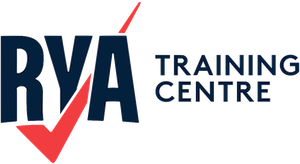Flag Semaphore Signals
A system for conveying information at a distance through visual signals using hand-held flags.
The position of the flags encodes the information; it is read when the flag is in a fixed position. Semaphores were adopted and widely used (with hand-held flags replacing the mechanical arms of shutter semaphores) in the maritime world in the 19th century. It is still used during underway replenishment at sea and is acceptable for emergency communication in daylight or at night when lighted wands instead of flags are used.
Contemporary semaphore flag system
The current flag semaphore system uses two short poles with square flags, which a signal person holds in different positions to signal letters of the alphabet and numbers. The signaller holds one pole in each hand and extends each arm in one of eight possible directions. Except for in the rest position, the flags do not overlap. The flags are coloured differently based on whether the signals are sent by sea or land. At sea, the flags are red and yellow (the Oscar flag), while on land, they are white and blue (the Papa flag). Flags are not required; they aim to make the characters more obvious.
Numbers can be signalled by first signalling “Numerals–Numbers Follow (Flag Semaphore)”. Letters can be signalled by first signalling “Letter J (Flag Semaphore)”.
The sender uses the “Attention (Flag Semaphore)” signal to request permission to begin a transmission. The receiver uses a “Ready to receive (Flag Semaphore)” signal to grant permission to begin the transmission. The receiver raises both flags vertically overhead and then drops them to the rest position, once only, to grant permission to send. The sender ends the transmission with the “Ready to receive” signal. The receiver can reply with the “Attention” signal. At this point, the sender and receiver change places.

